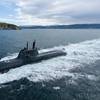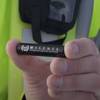Norwegian Firm To Study Sub Salvage
If Russia decided merely to recover the bodies, divers would probably have to cut a series of holes in the hull to get into a string of dark and cramped compartments. The existing escape hatches were too narrow to enter for a diver.
Meanwhile, Greenpeace, the international environmental pressure group, demanded that the Kursk be raised and called on all countries with nuclear-powered vessels to withdraw them from service.
Other options were to try to encase the reactor in a concrete tomb like at Chernobyl, or to squirt in furfurol, a Russian chemical that stiffens in water and has been used to entomb reactors dumped in the Kara Sea.
Russia might also try to cut out the reactor section of the vessel and raise that, or it could simply weld steel plates to plug holes in the wreck to stop water currents flowing through and spreading any leaks.






